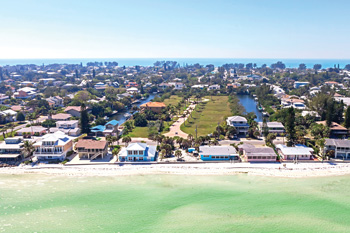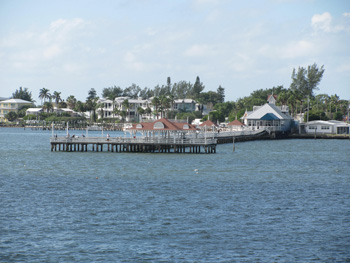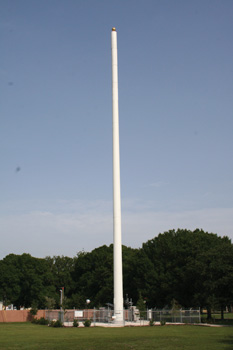BRADENTON – Manatee County commissioners answered a longstanding Anna Maria Island complaint that resort tax funds are not reinvested on the Island that produces most of them, also voting to implement criteria to limit future requests for the funds.
The commission voted unanimously last week to amend the county’s Tourist Development Plan to approve $1 million to rebuild the Bridge Street Pier in Bradenton Beach, $65,000 for improvements at Manatee Public Beach in Holmes Beach and $100,000 a year to keep the county beaches clean.
The money will come from Manatee County’s 5 percent resort tax fund. Also called the tourist development tax, tourist tax or bed tax, the resort tax is collected from owners of accommodations rented for six months or less who charge the tax to their renters, in most cases, tourists. For every dollar visitors pay to a hotel or private condo or home rental, five cents goes to the fund.
For the 2012-13 fiscal year that ended in October 2013, nearly half of the county’s resort tax revenue was produced on Anna Maria Island, according to the Manatee County Tax Collector’s Office.
The tax funds the Bradenton Area Convention and Visitors Bureau (CVB) tourism marketing efforts and beach renourishment, and the expansions approved last week.
Pier repairs funded
The county’s partnership with the city of Bradenton Beach to repair the Bridge Street Pier was initiated by former Mayor John Shaughnessy, who approached the Manatee County Tourist Development Council (TDC) for the funds last year.
The council, an advisory board to the county commission, unanimously approved his proposal that the county contribute a dollar for dollar match up to $1 million for every dollar the city spends on pier repairs.
The pier was damaged by boats that were blown from their moorings by storms, and by normal wear and tear. City pier team officials have struggled with budgetary constraints for years, at one point, considering rebuilding fewer shade structures and other amenities. The new funds will enable the city to replicate existing pier amenities, according to pier team leaders.
The pier is “an iconic amenity in our community,” Elliott Falcione, executive director of the CVB, told commissioners on Tuesday.
The city “has some skin in it,” said Bradenton Beach Mayor Bill Shearon, promising that the city will improve the pier “not only for our residents, but Manatee County residents and visitors from all over the world.”
Piers are a big tourism draw in Bradenton Beach and Anna Maria, “and used to be in Holmes Beach,” before the county demolished the aging pier at Manatee Public Beach, County Commissioner and former TDC Chair Carol Whitmore said.
Manatee Public Beach improvements
In a partnership with United Park Services (UPS), the county’s tenant at Manatee Public Beach in Holmes Beach, the county pledged a dollar for dollar match up to $45,000 for every dollar that UPS spends on the renovation of the public restrooms at the south end of the pavilion.
Years of visitors rinsing sandy feet in sinks and otherwise misusing the facilities has caused plumbing and other problems in the aging structure, according to UPS.
The county also pledged $20,000 to replace the entrance sign at Manatee Public Beach, which Whitmore has disliked from its installation.
“The new sign has eroded away the character of the beaches with neon,” she said, adding that Holmes Beach Commissioner Jean Peelen also has expressed concern about the sign. “The operators have tried to turn it down, but it just looks like St. Pete and Clearwater, and I know that’s not the impression we want to give.”
The Holmes Beach Commission approved the sign in 2011 after rejecting a 19-foot-tall version proposed by UPS partner Alan Kahana.
A new sign “will accent the destination’s brand,” Falcione said.
“Let’s hope we can get it back… to the character of a laid-back, non-commercial setting,” Whitmore said.
The commission also voted to use up to $100,000 a year to clean up Manatee Public Beach and Coquina Beach when a storm, red tide, mullet dumping, surplus of visitors or other event leaves debris on the beach.
New criteria for future requests
The commission also unanimously voted to establish seven new criteria to apply to future requests for resort tax funds, which Falcione presented last month to the TDC, which unanimously approved them.
“We need to reinvest to continue to grow our community and our amenities within our community,” Falcione said. “We created some criteria so we continue to make good investments.”
The criteria are:
• Is the requested project an eligible use of tourism resort tax funds under Florida law?
• What level of investment will the project proposer be making?
• Is the project in a tourism high-impact corridor?
• Will the project generate short-term rental room nights?
• Will the project generate marketplace impressions?
• Is the project similar to an existing project?
• Will the project help diversify the county in the tourism marketplace?
The county’s tourism consultant will help in projecting room nights and marketplace impressions, Falcione said, confirming Manatee County Commissioner Michael Gallen’s understanding that all of the criteria do not have to be met to approve a project.
“It will help the TDC when people come before the board,” Whitmore said, adding that she is glad to have the guidelines.
“This money comes from tourism so it should stay in tourism,” she said. “We’ve gotten requests that wouldn’t generate hardly any tourism funds.”





